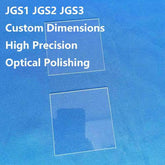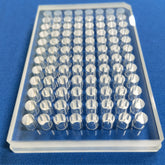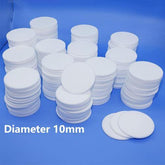A Summary of the Difference Between Quartz Glass Tubes and Other Common Tubes
A quartz glass tube is a tube made of silica, exhibiting exceptional high temperature resistance, corrosion resistance, thermal stability, light transmission, and electrical insulation. These properties render it a highly versatile material, used in a multitude of applications including discharge tubes, insulation products, acid-resistant containers, semiconductors, and other products.
Quartz glass tubes are frequently compared with other tubes manufactured from alternative materials. This article has been written with the intention of facilitating an understanding of the differences between quartz glass tubes and other common tubes by presenting a comparative analysis.
The difference between quartz glass tubesand carbon fiber tubes

The heating conductor of quartz glass tubes is tungsten wire, whereas the heating conductor of carbon fibre tubes is carbon fibre wire. The continuous use time of quartz tubes is approximately 2000 hours, while that of the carbon fibre tubes is approximately 5000 hours. In terms of cost-effectiveness, quartz glass tubes demonstrate a superior performance compared to carbon fibre tubes. Carbon fibre tubes find applications in a range of industries, including aerospace, medicine, etc. while quartz glass tubes are predominantly applied in heating equipment such as electric radiators.
The difference between quartz glass tubes and halogen tubes
A halogen tube is a sealed tube containing halogen inert gas with fast heating and high brightness. However, the service life of such a tube is not sufficiently long. A quartz glass tube is composed of silica and exhibits moderate heating speeds and brightness, along with a relatively long service life. 
The difference between quartz glass tubes and ordinary glass tubes
The silica content of quartz glass tubes is in excess of 99%, whereas that of ordinary glass tubes is between 70% and 80%, inclusive of other components. Quartz glass tubes are capable of withstanding higher temperatures and can be utilized for an extended period at 1100°C, whereas the high temperature resistance of ordinary glass tubes is markedly inferior to that of quartz glass tubes. Quartz glass tubes demonstrate superior corrosion resistance, whereas ordinary glass tubes exhibit inferior corrosion resistance compared to quartz glass tubes. Additionally, quartz glass tubes exhibit higher light transmittance and stability compared to ordinary glass tubes.

The difference between quartz glass tubesand stainless steel tubes
The quartz glass tubes are subjected to heat from the electric material, whereas the stainless steel tubes are heated by the heating fluid. The stability and high-temperature resistance of quartz glass tubes are superior to those of stainless steel tubes. However, quartz glass tubes are not as durable as stainless steel tubes, which makes them susceptible to fracture on impact.







